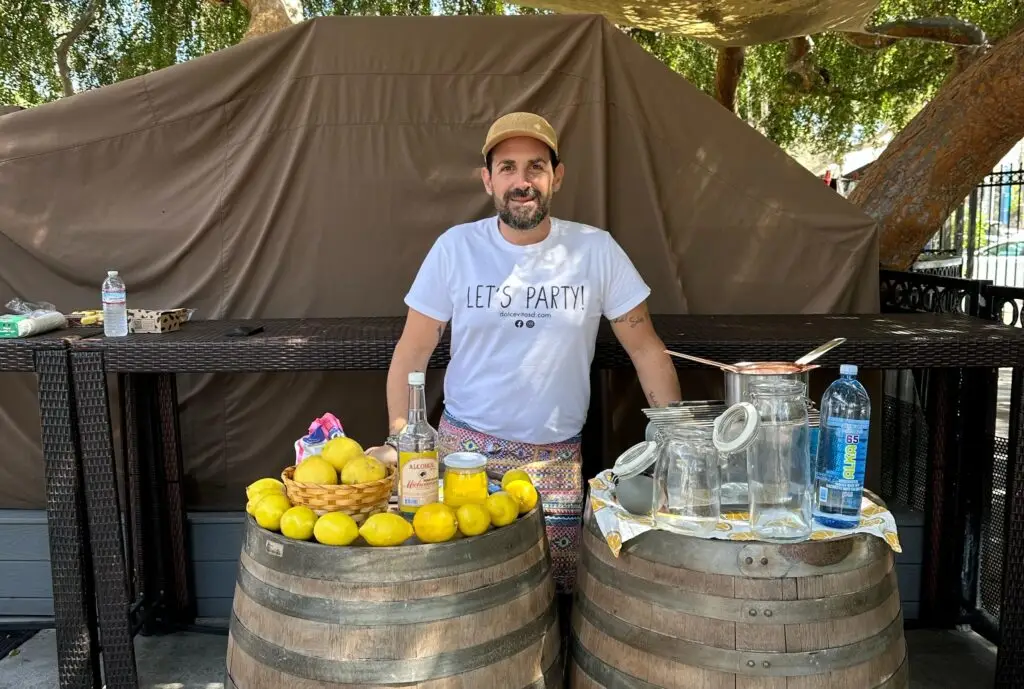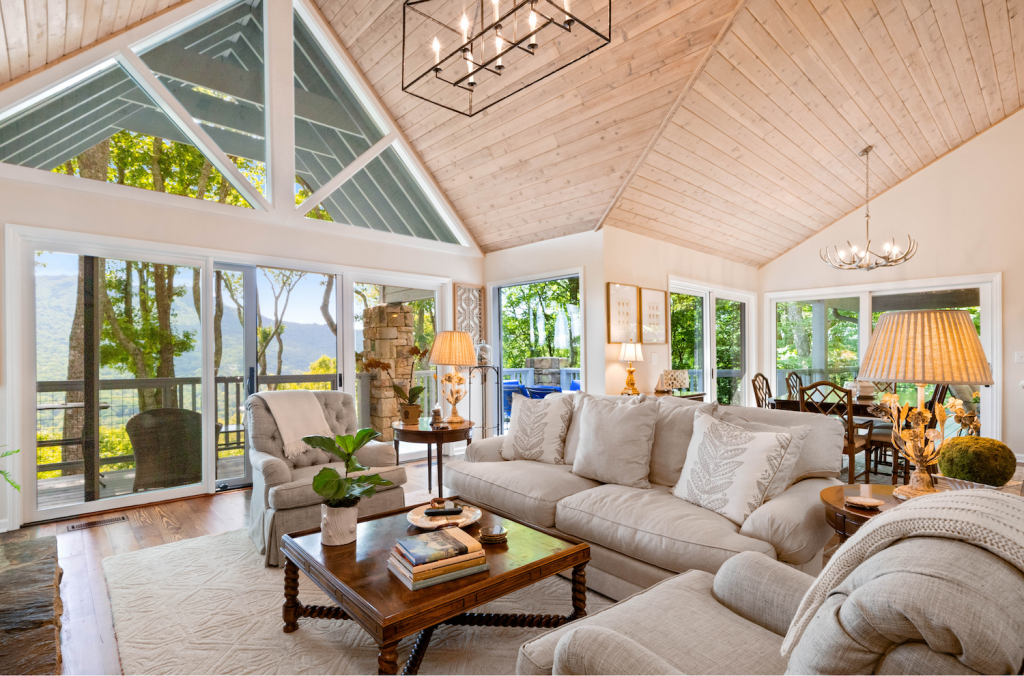“The biggest [mandate] was to make the apartments as much like boutique hotels as possible,” says Tamara Romeo. She’s the CEO of Southcoast Design Group, the firm behind Stateside and Monte, two new off-campus housing complexes near San Diego State University (SDSU). “Those spaces where people could gather outside of their apartments like they would in a hotel lounge or at a gym or at the spa—[developers] wanted us to create that same sort of vibe in the housing community.”
Indeed, students don’t have to venture far from their apartments to congregate in conference rooms and public study spaces that “look more like a coffee shop or cool café,” Romeo says. “And a roof deck is something both properties have. That amenity is really hot with students because they study there, they read, they gather with their friends, they work out.”
With additional perks like in-unit laundry, free coffee, and the ability to connect lighting, climate control, and other building features to devices like Alexa or Google Home, the student housing is near-indistinguishable from the amenity-stacked, high-rise, luxury apartment buildings that seem to be popping up all over the county—aside from the fact that each unit at Stateside and Monte comes furnished with familiar dorm furniture like extra-long twin beds.
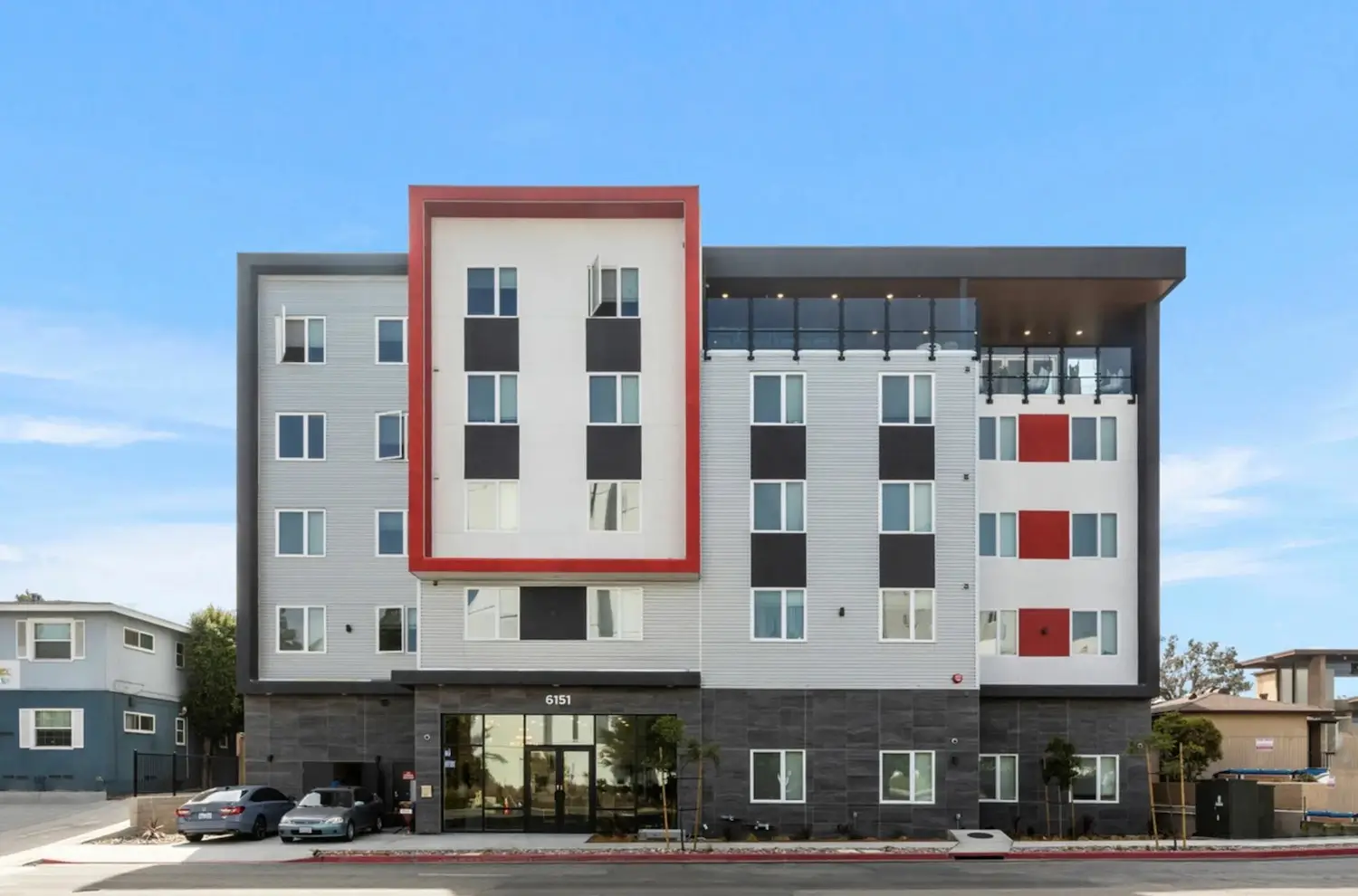
“[Developers] now realize that students have an expectation … for happiness and well-balanced living,” Romeo says. “I think parents like it because they think, ‘My student’s going to live this luxury lifestyle while they’re going to school, and they’re going to aspire to that when they graduate. It’s going to help them do better in school and try to start a great career because they want to maintain that lifestyle.’”
And while it’s true that a lease in the building doesn’t come cheap—rates start at $1,012 per person for a shared room in a four-bedroom at Monte—it may actually be more affordable to live large off-campus than it is to stay in an SDSU dorm. A sophomore would pay $1,178 a month during the 2025–2026 school year for space in a triple (with no meal plan) on-campus, compared to $851 for the same at Stateside.
Yet living mere steps away from class, clubs, and most of your college’s student body has benefits that go beyond the material, argues Bob Schulz, associate vice president for real estate, planning, and development at SDSU.
Prior to his tenure at SDSU, Schulz worked at an institution that offered a broad range of housing options, from traditional red-brick dorms to what he calls “executive-style apartments.” Students preferred the latter—“they all talked about how much they loathed the dormitories,” Schulz recalls. “But if you interviewed them differently, if you asked about their college experience, how they felt about going to school, it all flips. The students that were in old-fashioned dormitories had a better experience. They made more friends, they were more engaged with the campus, they had higher GPAs, they were more likely to come back for their sophomore year. Engagement is the secret sauce of student housing.”
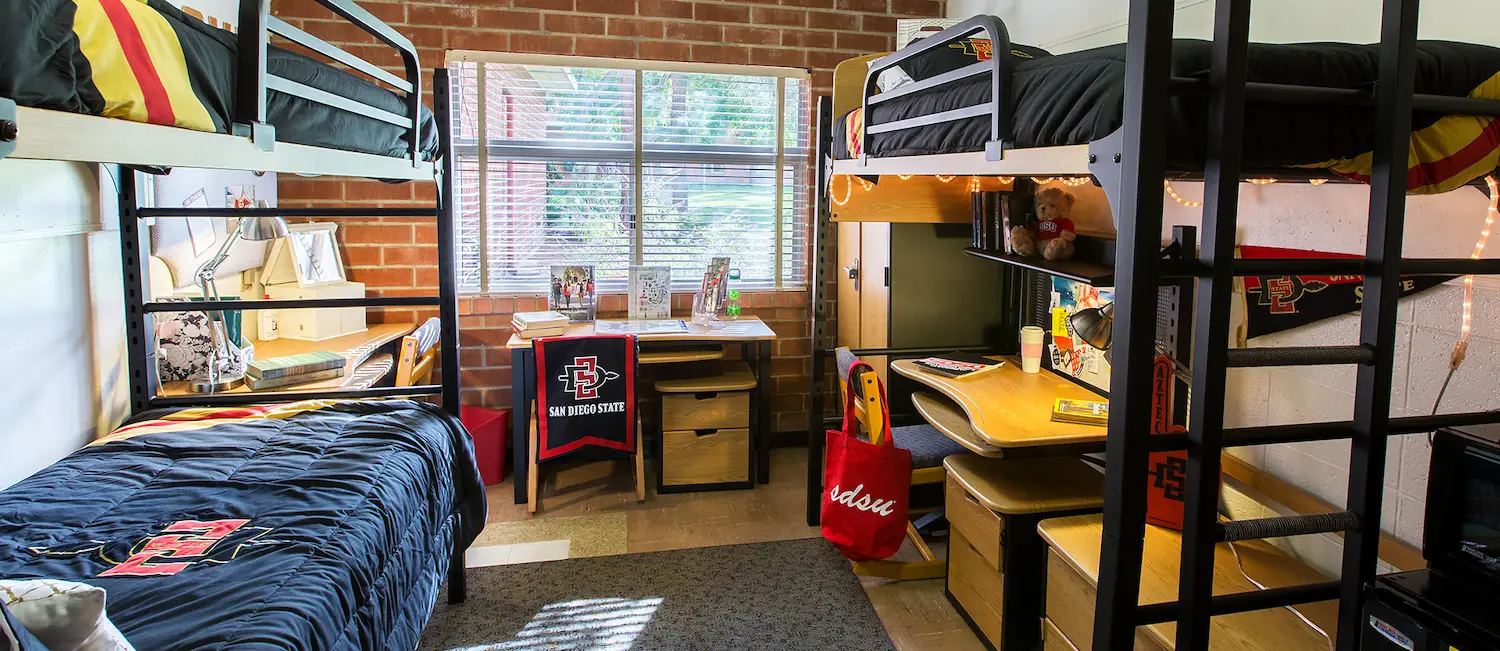
He points out that first-years living in classic university residence halls interact with other students near-constantly, whether they’re headed to the shared bathroom to brush their teeth or burning popcorn in the communal microwave. Freshmen often leave their doors propped open during the day, prompting friends and neighbors to stop and chat.
“Your circle of associates that you learn to know on a really close, first-name basis is probably somewhere in the 50-to-60 range,” Schulz continues. “Whereas if you share an apartment with five other students, your close circle of associates is five. The odds that you meet your people are literally 10 times higher in the freshman dormitory than they are in an apartment-life scenario.”
That’s why the incoming University Towers East, which breaks ground this summer and is planned for completion by 2027, will be true-blue freshman housing—double-occupancy rooms on long halls with a communal restroom. Tarastec, a structure designed to house freshman and sophomores and being built on the same timeline, splits the difference: “[It] has suites with interior bathrooms, but no kitchen amenities. It also has substantially more shared lounge and program space,” Schulz explains. “So, you can go to the bathroom in your unit, but we want you to get outside and walk down to the shared kitchen where you make your brownies or your birthday cake for your friends.”
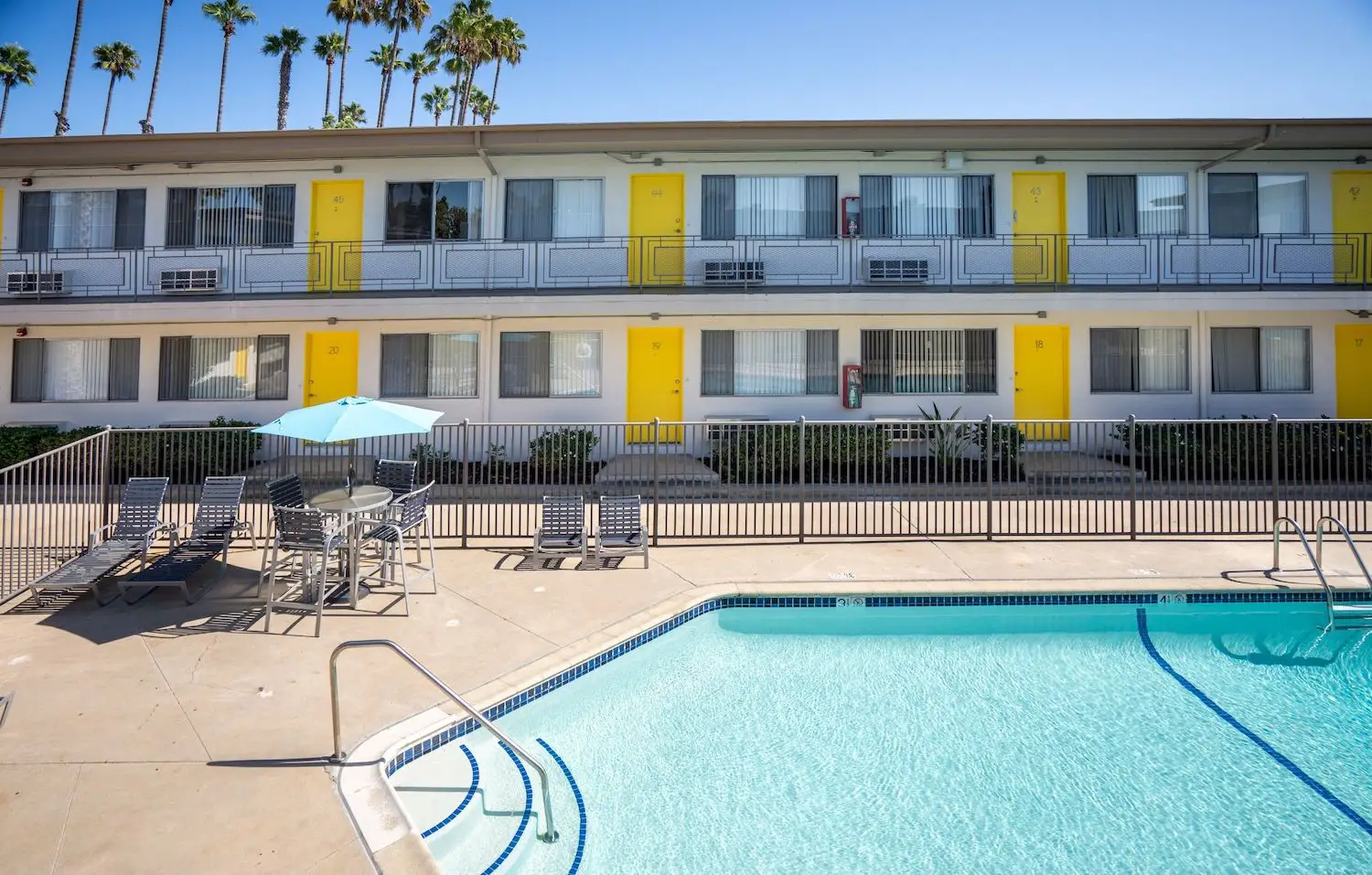
University Towers East and Tarastec are both part of the university’s multi-phase Evolved Student Housing project, which will add 5,220 student beds to campus. The remainder of the planned structures will hold four-bedroom apartment units for upper-division students. “At which point, it’s an awful lot like any other market-rate apartment, anywhere in the region,” Schulz adds.
And it’s not lost on Schulz that “market-rate” means something different today than it did 10 or even five years ago. “Our students are being really impacted by the cost of San Diego housing,” he says. The university evaluated builders’ bids primarily from a money perspective.
“The team we ended up with was able to deliver 160 additional beds at the same price point at any of their competitors,” Schulz recalls. “[With off-campus housing,] there’s a little bit of an amenity competition happening. We probably do much less of that than the private developers because we have a freshman and sophomore live-on requirement. We do not want to burden them with more cost than that we need to, so we don’t build them swimming pools. We don’t build them lazy rivers. We try to cover our costs and stop there and give our beds as affordably priced as we can in a responsible manner.”
Affordability is also a priority at the University of California, San Diego (UCSD), especially considering its location in La Jolla, one of the county’s most affluent and expensive neighborhoods. UCSD hopes to eventually be able to offer enough on-campus residences to house every single student.
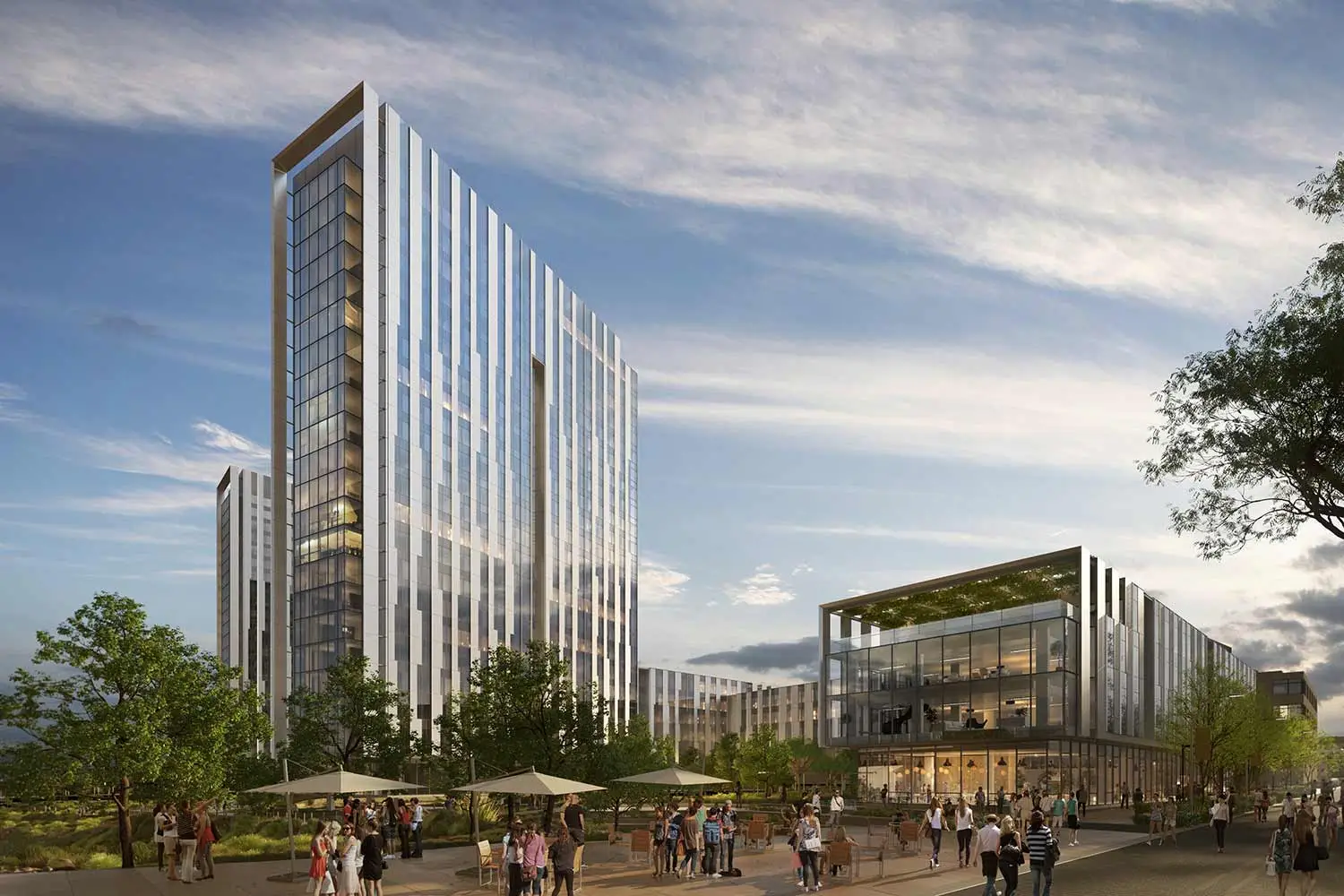
Pepper Canyon West
“We always scrutinize past projects to look at what designs and systems have been most efficient and most economical,” says Dennis Brown, program manager at UC San Diego Capital Program Management. “We get competitive pricing from our general contractors and trade partners to make sure that we’re spending money as economically as possible, but still providing a really great value and experience for students.”
At UCSD, a great experience increasingly means mixed-use—and, yes, amenity-filled—housing. Two recently completed projects (Theatre District and Pepper Canyon West) and an incoming one (Ridge Walk North) are considered “living and learning neighborhoods.”
“Projects are not just a housing project,” Brown says. “They’re combined with other uses—Theatre District has classrooms and retail and a parking structure. Ridge Walk North has academics and a lab. They’re more like a greater community where there are reasons for students from outside of the housing component to come to that place, so it becomes more integrated.”
The three new buildings, along with a fourth planned project, Pepper Canyon East District, help meet student demands for more single-occupancy rooms—and privacy in general. “Typically, we don’t do true dormitory-style housing, where there’s a shared kind of bathroom facility for every floor,” Brown adds. “At Ridge Walk North and Pepper Canyon West, all the residences have their own kitchens.”
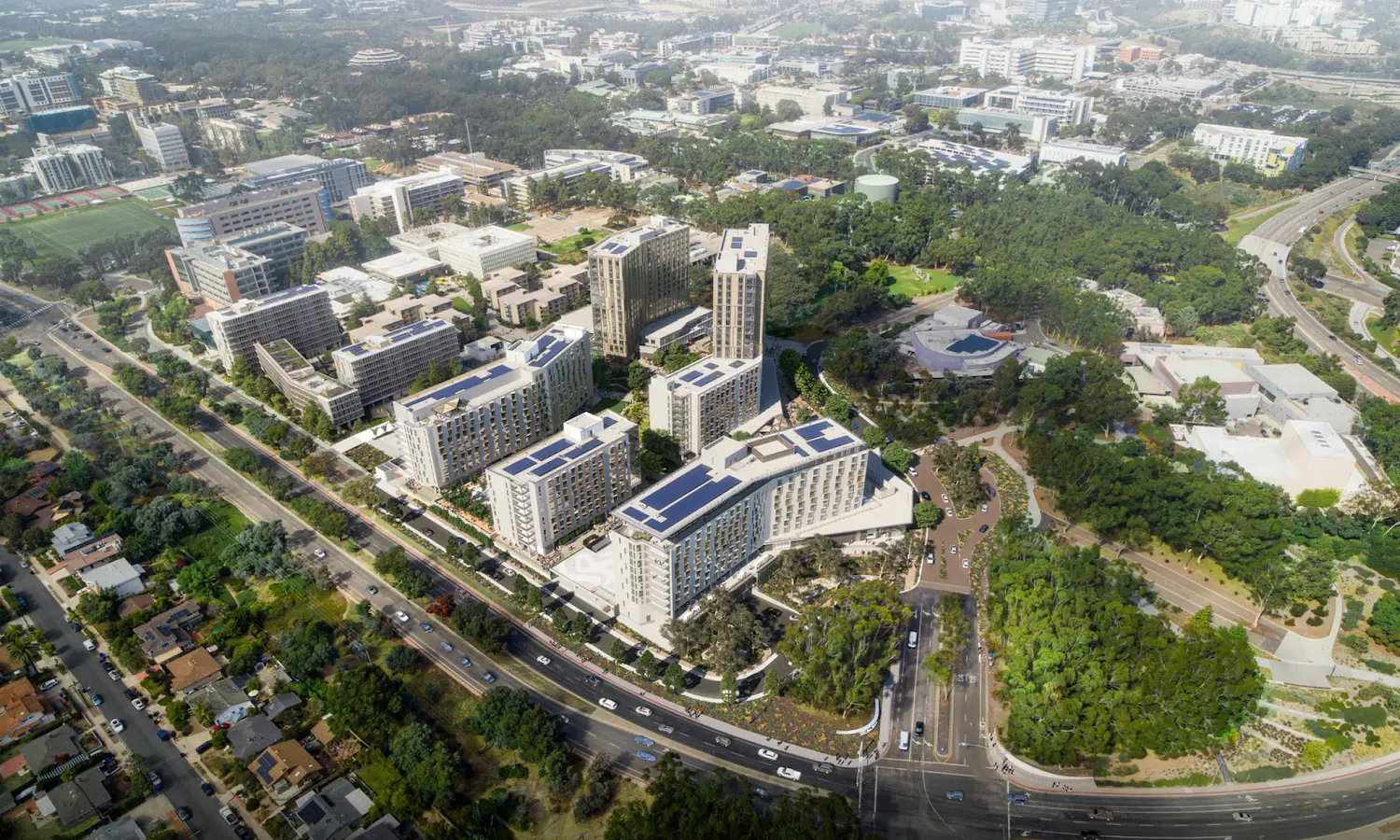
Theatre District
But the university’s team also incorporated spaces that encourage residents to venture out and connect with other students. Laundry rooms sit beside study spaces, so occupants might work together while waiting to move their clothes to the dryer rather than disappearing back into their dorms. And “we make sure that the outdoor space is programmed as much as the interior space to really leverage the beautiful environment here in San Diego,” Brown says. The new buildings have lawns and other places to hang out in the sunshine.
Perhaps the biggest difference from the cookie-cutter dorms of yore, though? The fact that the new spaces encourage creativity and originality. “I think students have been looking for flexibility,” Brown explains. “[We added] rooms that could be used for a multitude of purposes, including furnishings that are movable and you can rearrange a space. That even goes down to having movable furniture within the suites, within the bedroom, so that students can easily personalize it and make it feel like it’s their own.”
PARTNER CONTENT
It may not be a luxury hotel, but perhaps that’s what college students are really seeking—a place to define for themselves.


